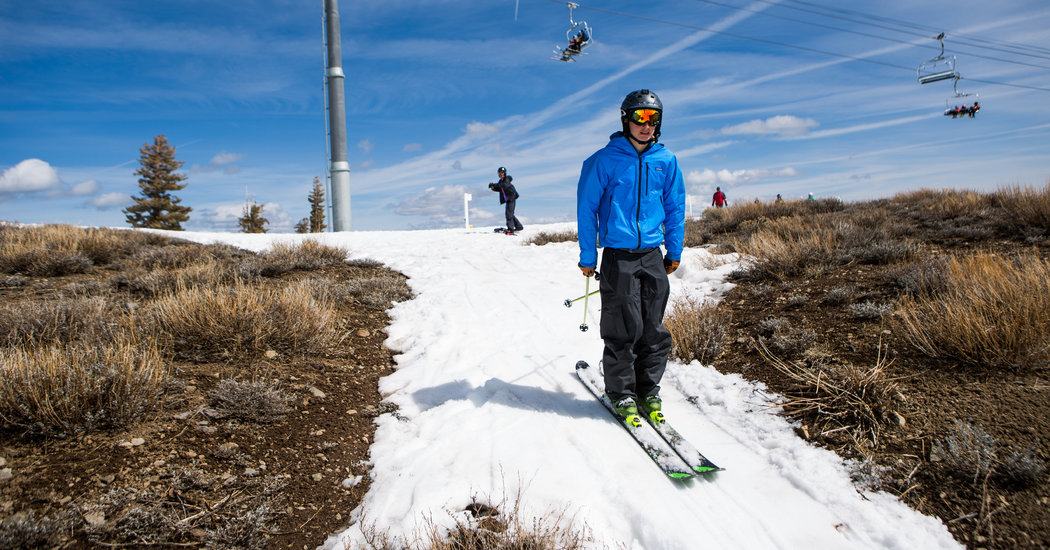
Ski season is getting cut shorter every year due to climate change. A new study by the National Snow and Ice Data Center(NSIDC) suggests that if our climate continues to change at its current rate, then warmer winters will mean shorter ski seasons for mountains all over North America.
This article gives predictions based on research for average snowfall in the coming decades. Please take into account that these are predictions and do not guarantee complete accuracy. However, if the numbers are as bad as they say they are, then it is something that all of us as skiers need to recognize and act on immediately.
By 2050, several ski areas may have ski seasons lasting only half as long as they do now. It’s an emergency for skiers and snowboarders everywhere.

From 2008 to 2017, snowfall in the U.S. has decreased by 3.5% annually. As a matter of fact, average snow depths have been decreasing since the 1960s. It’s not exactly a new issue. BUT what is especially concerning now is that we are seeing this decrease in a more accelerated way than ever before.
According to the Fourth National Climate Assessment, which provides a comparison of 1986-2016 temperatures to those for 1901-1960, the average temperature has increased across 95% of the United States’ land surface. During these time periods, the most widespread temperature changes occurred in winter – as high as 1.5°F in most places. If left unchecked, these temperatures will only continue to rise, along with the climbing snow-line.

Snow droughts are a major concern for the skiing community everywhere. As global temperatures rise and winters get shorter, more precipitation will fall as rain rather than snow. As a result, snow-lines will recede to higher elevations, causing lower elevation regions to suffer.
This has already become evident in parts of the Southwest, where snow is falling later in the year and retreating sooner. Continuing down this path of climate change, winters are projected to see fewer days below freezing, too.
The amount of days with temperatures below freezing is projected to decline due to climate change. Credit: Climate.gov
Shorter ski seasons could result in fewer visits to ski areas leading to the potential loss of hundreds of millions of dollars in the ski industry. This could not only hurt ski areas, but also the restaurants, bars, hotels, and other businesses that are directly reliant on snowfall bringing in visitors to ski destinations. No snow = no skiing = problems for everyone.

According to a report, by the end of the century “it will be too warm to snow in many current snow-producing situations, and precipitation will mostly be rainfall.”

Elevation will play a huge factor in the future of North American ski areas. Lower elevation ski areas will be the first to go, as winters may not be cold enough for rain to turn to snow below a certain elevation. This is bad news for coastal mountains or mountains with lower elevations, like many in the East Coast.
The East Coast is predicted to get hit by snow droughts especially hard in coming decades. While high elevation areas of the Rocky Mountains are expected to be seemingly fine throughout the middle of the 21st century, the average length of ski season in the East could be cut in half as soon as 2050.
The percent change in ski season length by 2090. Credit: Climate.gov
In Utah, the upper elevations of the Uinta Mountainsmay still receive snow while the Wasatch Range may be completely absent of snow by 2100. This could be fatal for the ski industry in Utah that is based mostly in the Wasatch. Yet, it goes further than just Utah. Many once-skiable parts of the country may stop receiving snowfall entirely by 2100, with snowfall being limited only to higher elevations.
The future of skiing will depend on the energy choices societies make right now and in the coming decades. Although some high elevation areas like the Rockies may still offer powder skiing for the next few decades, other parts of the country won’t. More precipitation is already starting to fall as rain rather than snow in the winter, and the time to address these concerns is now if you haven’t already.
Can we save the future of skiing? Credit: SnowBrains[/caption]


